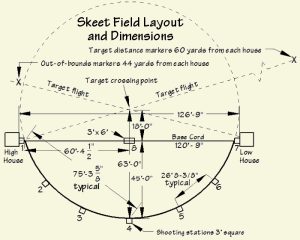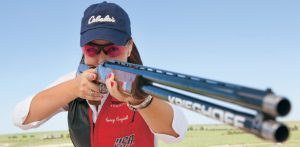Decoding Skeet: Differences in International vs. American Styles
In the world of shooting sports, skeet shooting is a popular and challenging option. Originating in the early 20th century, this sport involves shooting clay targets launched from two fixed stations in a semicircular arrangement. While skeet shooting shares a common foundation, it has branched into two distinct styles—International Skeet and American Skeet. These disciplines may appear similar to the untrained eye, but subtle differences in rules, techniques, and target speeds set them apart.
The Roots of International and American Skeet
Skeet shooting was originally conceived in America, circa 1920, as a means to improve hunting skills. This American version grew in popularity and was standardized by the National Skeet Shooting Association in 1926. The name ‘skeet’ derived from the Norwegian word for ‘shoot’.

International Skeet, also known as Olympic Skeet, came into prominence around 1960s when the sport was included in the Olympic Games. The International Shooting Sport Federation (ISSF) oversees this discipline. The primary objective was to make the game more challenging and less predictable, aligning it with the high standards of the Olympics.
Despite their distinct origins, both forms maintain the basic principles of skeet shooting—providing a wide range of target angles and speeds to closely imitate the unpredictability of bird hunting.
Breaking Down the Rules and Techniques of International Skeet
International Skeet is deemed the more challenging of the two disciplines. The targets are released from a high house and a low house at varying angles, reaching speeds up to 65 mph. One of the defining characteristics is the variable delay (up to 3 seconds) between the shooter’s call and the target’s launch. This unpredictability demands rapid reflexes and exceptional hand-eye coordination.

Also unique to International Skeet is the rule requiring the shooter to hold the shotgun at hip level until the target appears. This tests the shooter’s skill in quickly acquiring the target and accurately firing. The competition comprises of eight stations arranged in a semicircle with a 19.5-meter radius around the center peg.
Participants shoot a single target from stations 1, 2, 6, and 7 and a double target at the remaining stations. The sequence and regulation of International Skeet can be quite complex, demanding both physical agility and mental acuity.
Understanding the Nuances of American Skeet Shooting
American Skeet, in contrast, is slightly less challenging and considerably more predictable. The targets are launched at a constant speed of approximately 45 mph, and the delay between the shooter’s call and the target’s launch is consistent.
In this discipline, the shooter can hold the gun in a ready-to-fire position, making it easier to aim and shoot. American Skeet also consists of eight shooting stations and uses both the high house and the low house. However, the shooting sequence differs slightly from International Skeet.
In American Skeet, competitors shoot at a single target from each house in turn from stations 1, 2, 6, 7, and a double target at all stations. This standardized format and predictable nature make American Skeet a preferred starting point for beginners in the field of skeet shooting.

Comparative Analysis: International Skeet vs American Skeet
Comparatively, International Skeet is more unpredictable and challenging, making it a favorite among seasoned shooters seeking to test their skills. The variable delay, higher speed of targets, and rule of holding the gun at hip level until the target appears, all contribute to its complexity.
On the other hand, American Skeet provides a more standardized and predictable shooting experience. The consistent target speed, fixed delay, and ready-to-fire gun position make it more accessible and suitable for beginners.
While the basis of the two disciplines remains the same, these differences in rules and techniques significantly influence the strategies and skills required for each. Understanding these differences is crucial for participants to prepare and strategize effectively, ensuring they can fully enjoy and excel in the fascinating sport of skeet shooting.
# # #


Comments